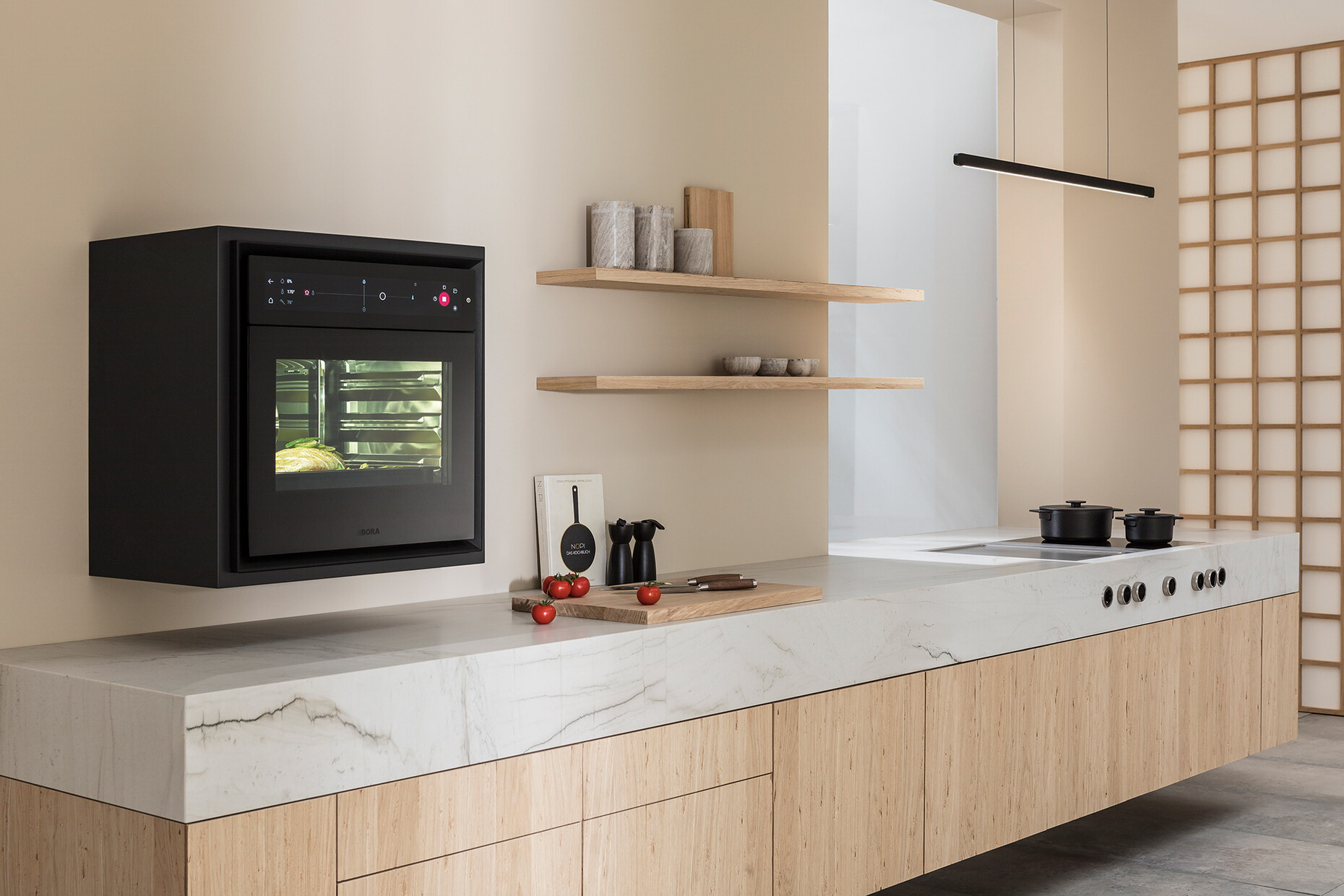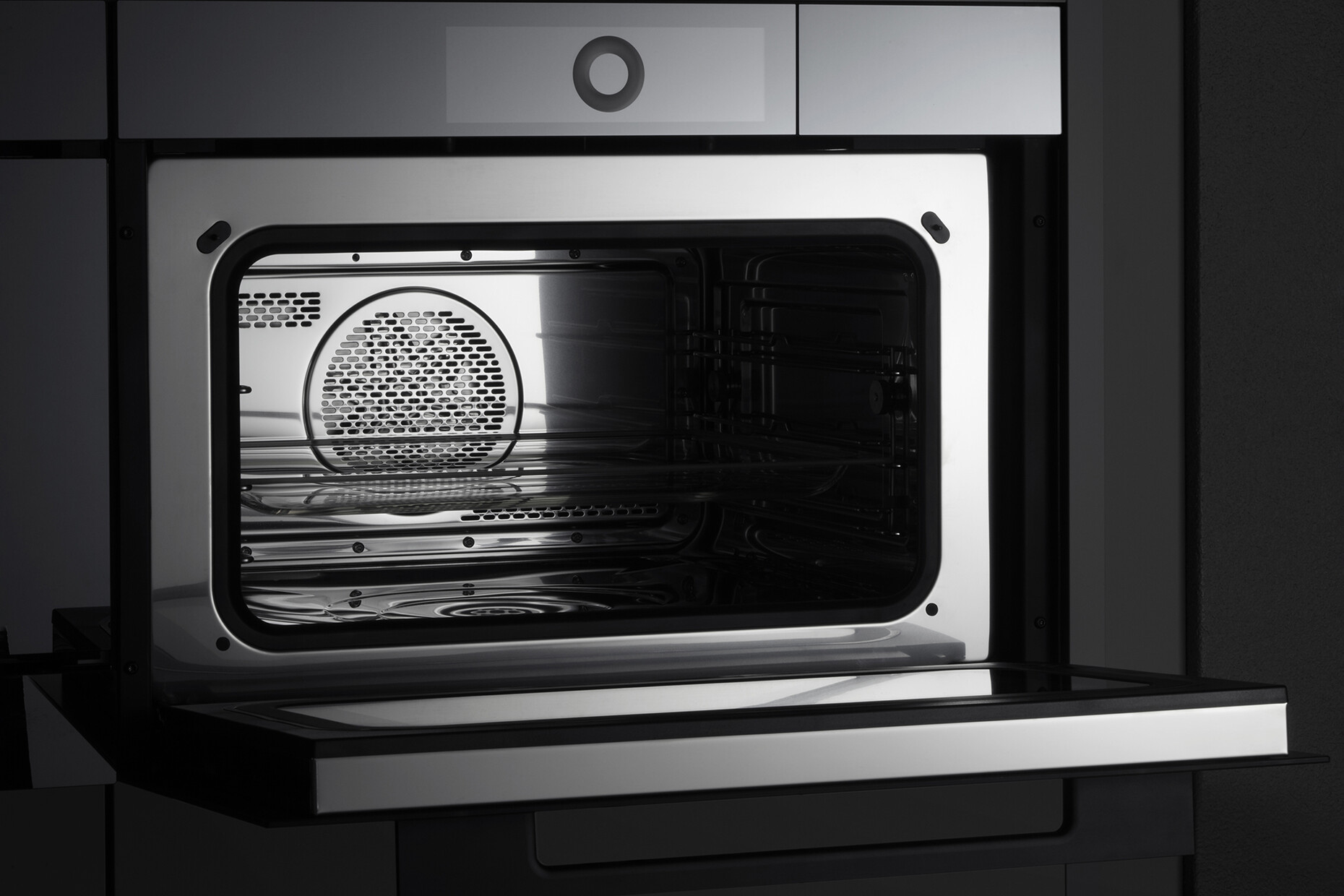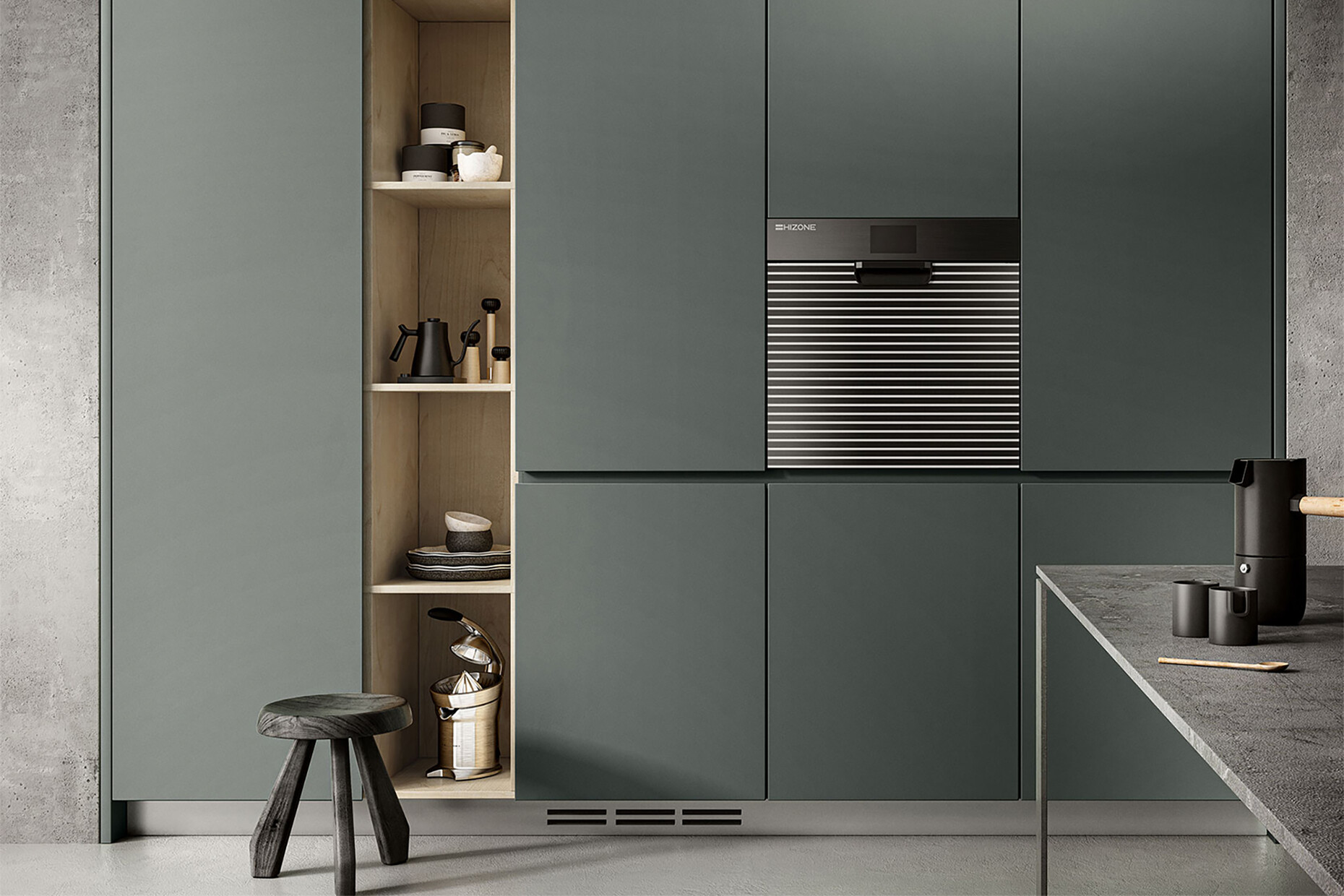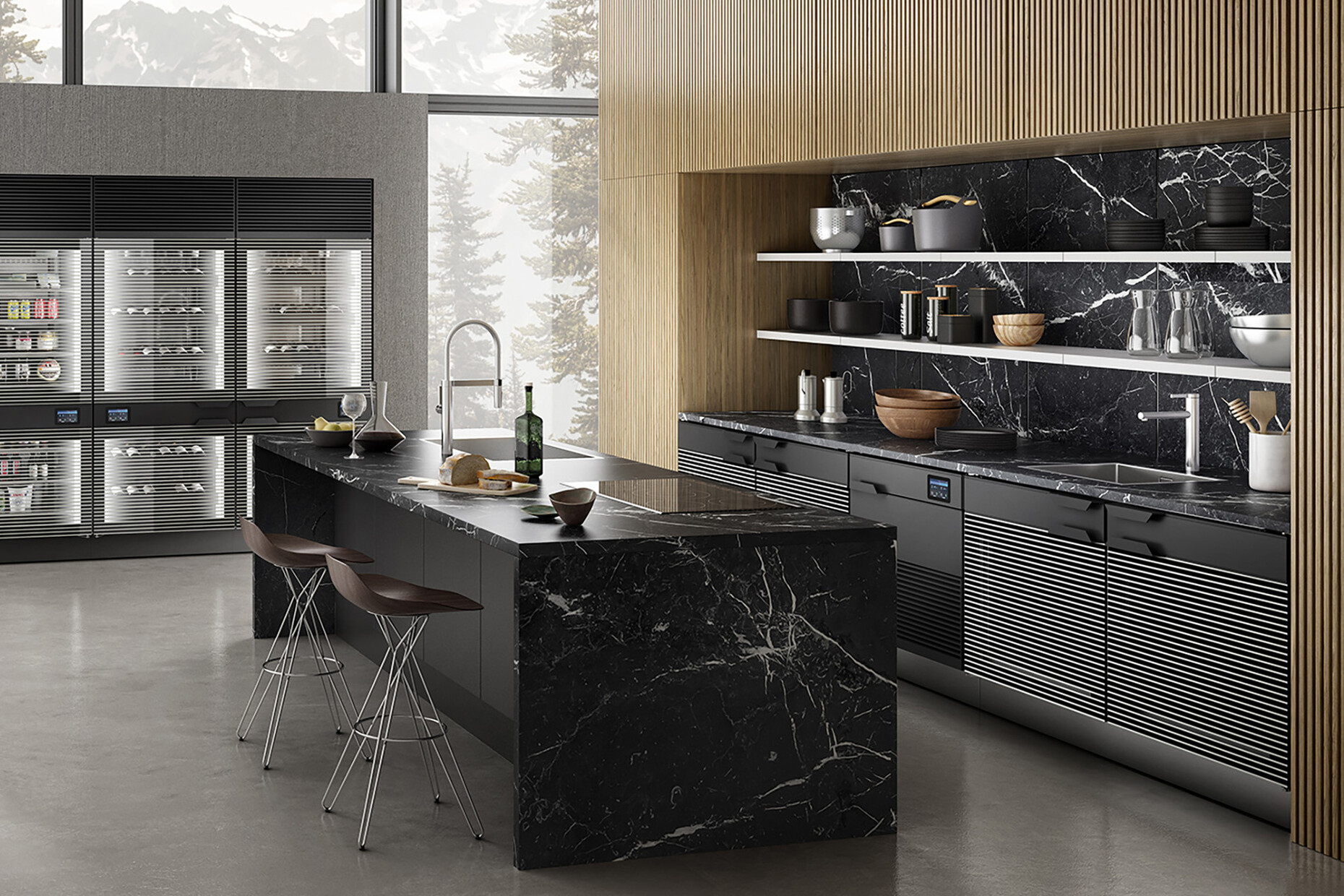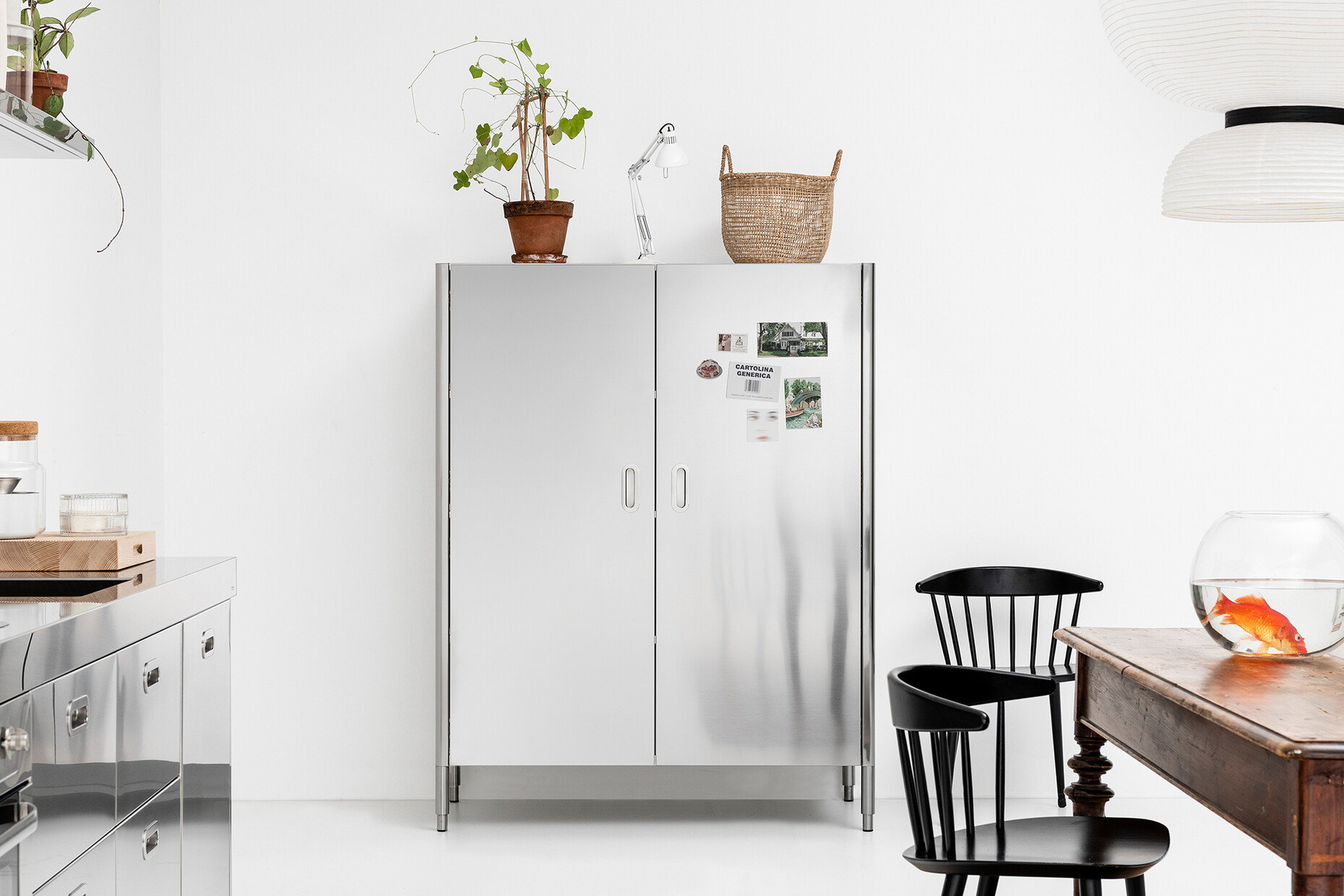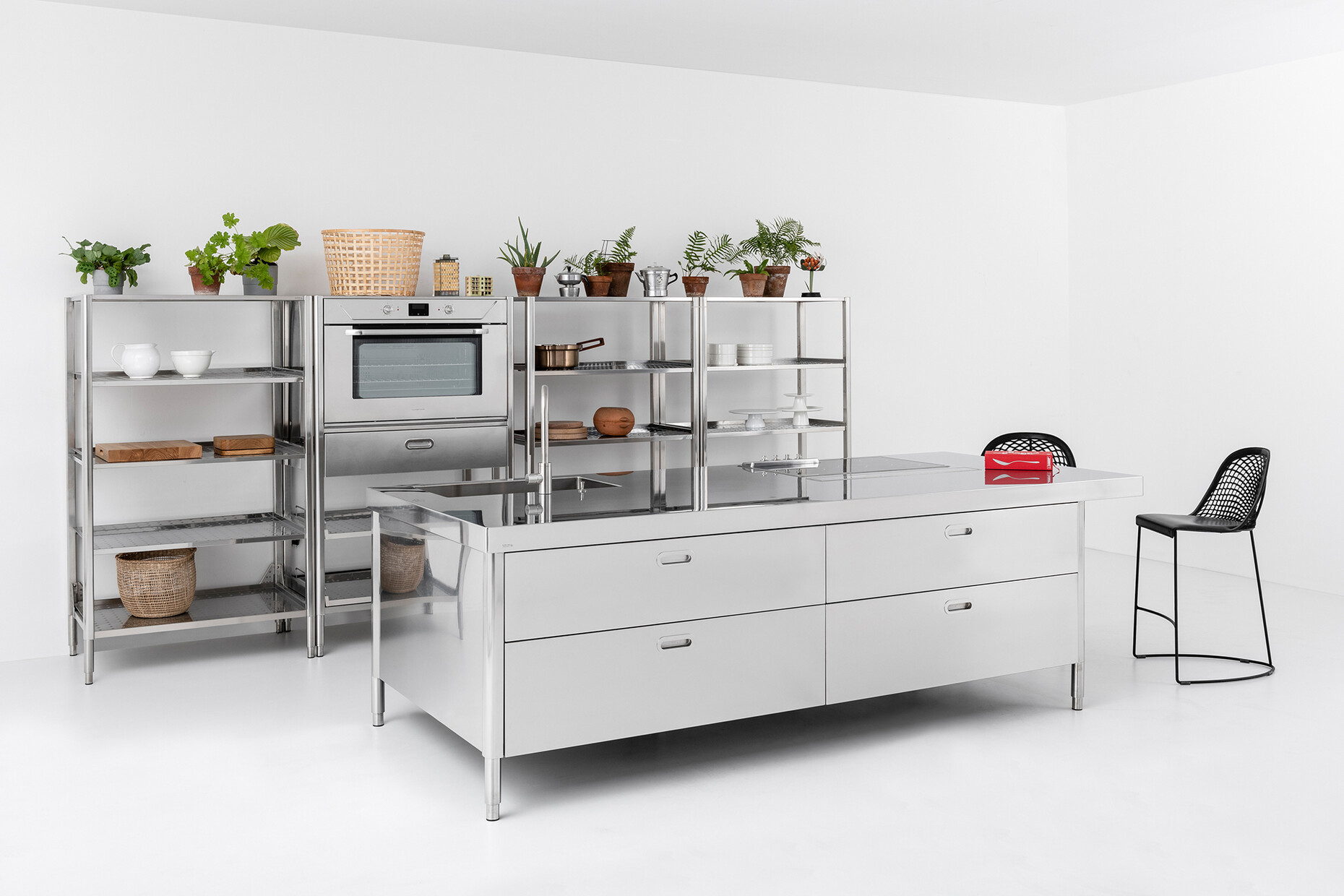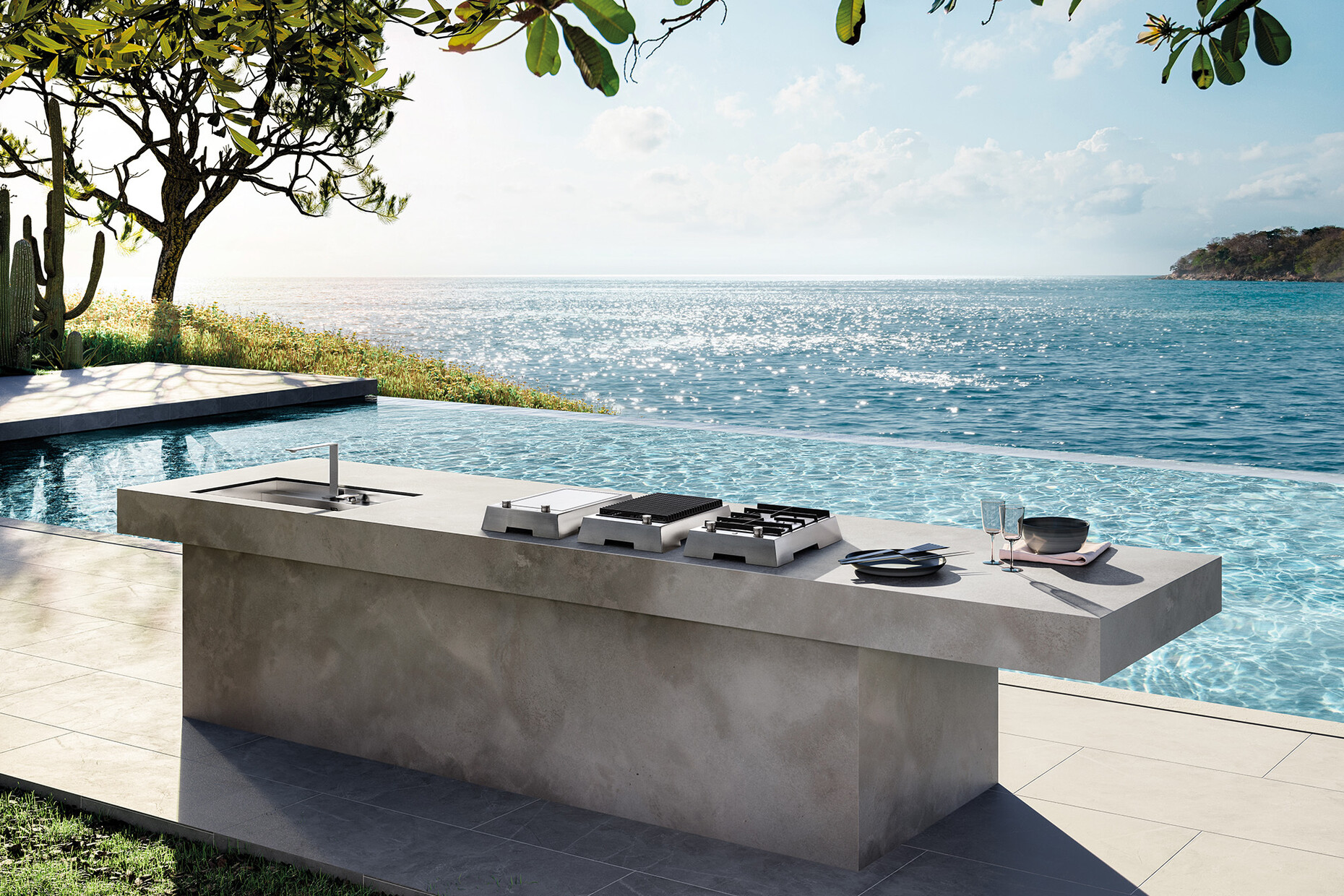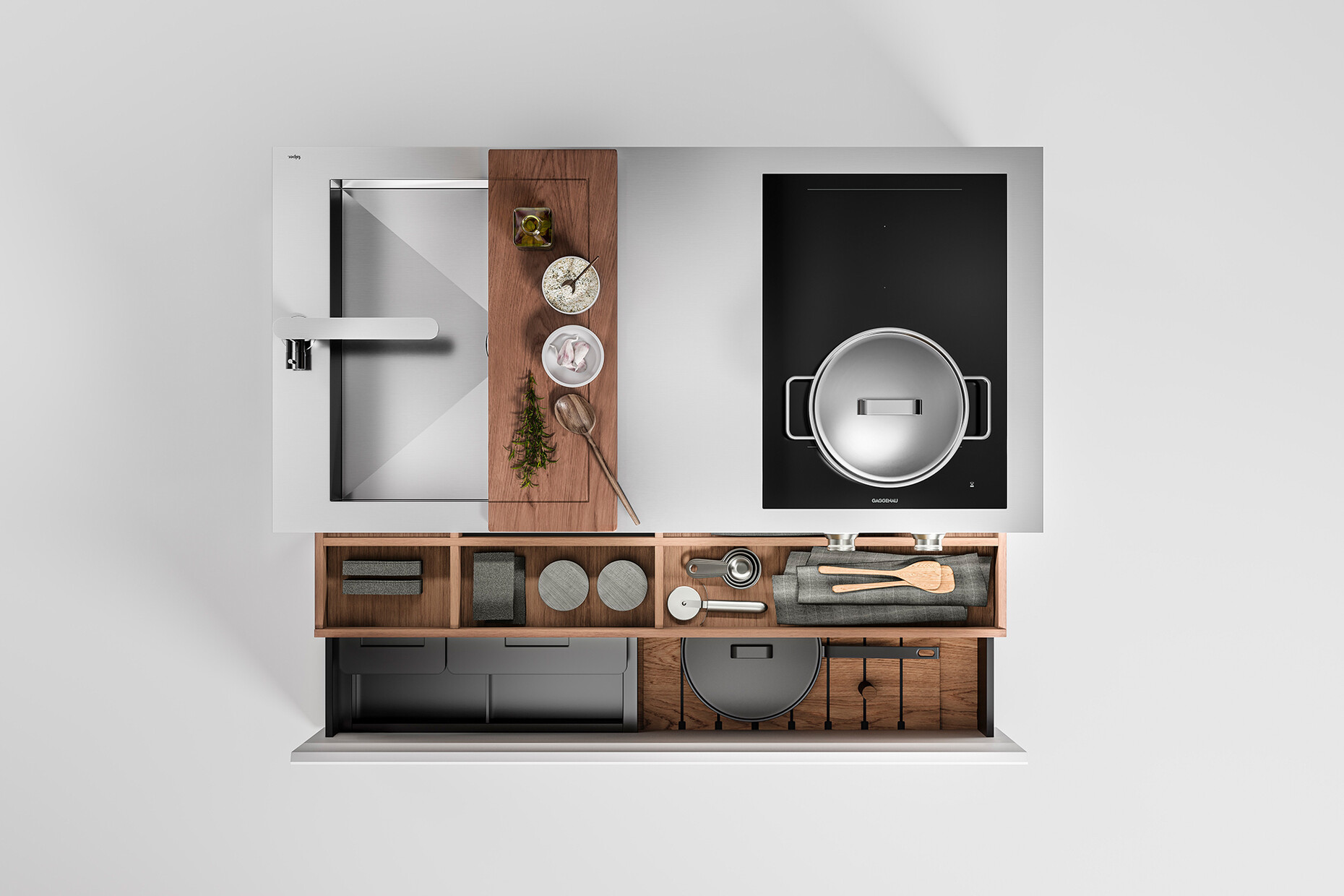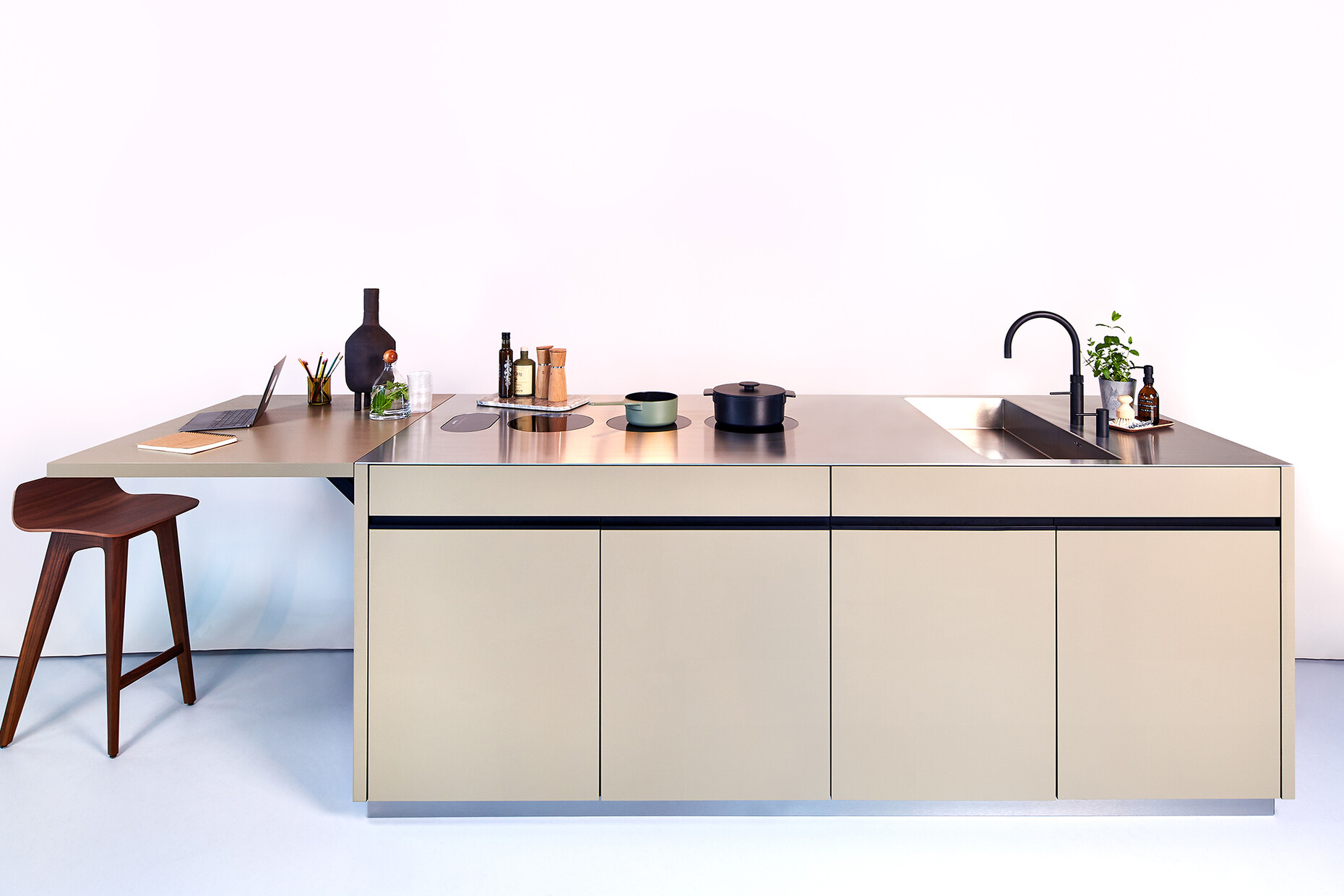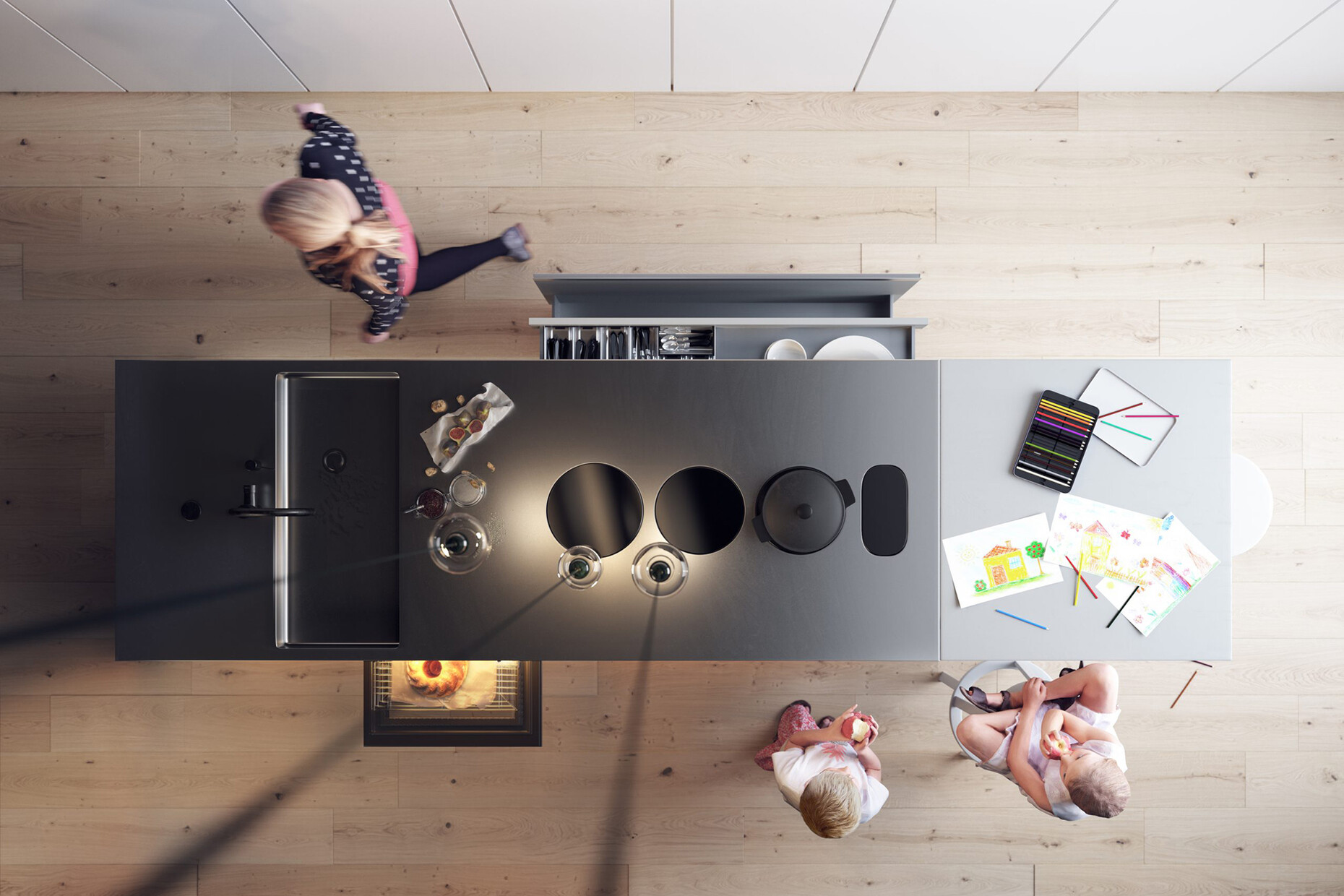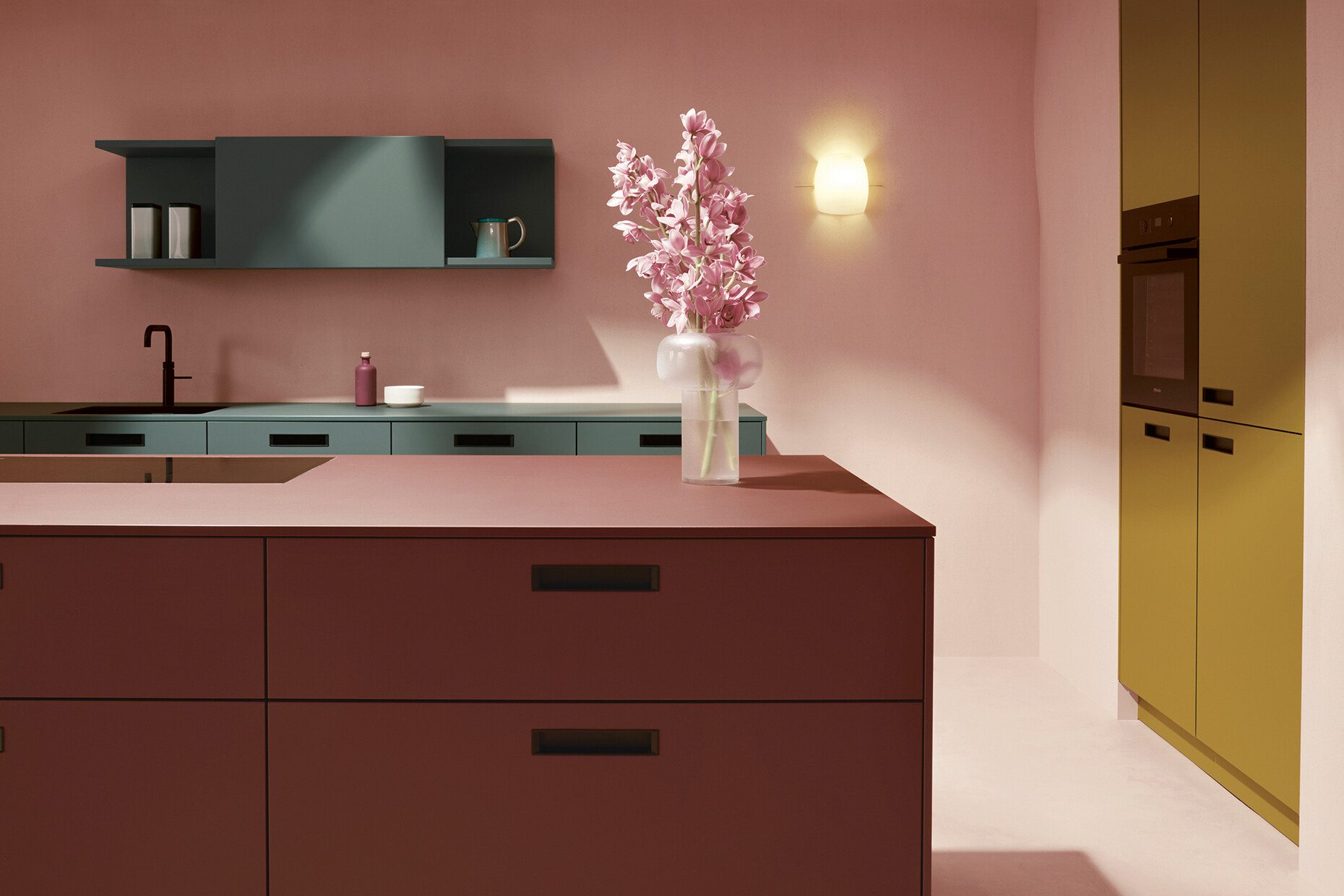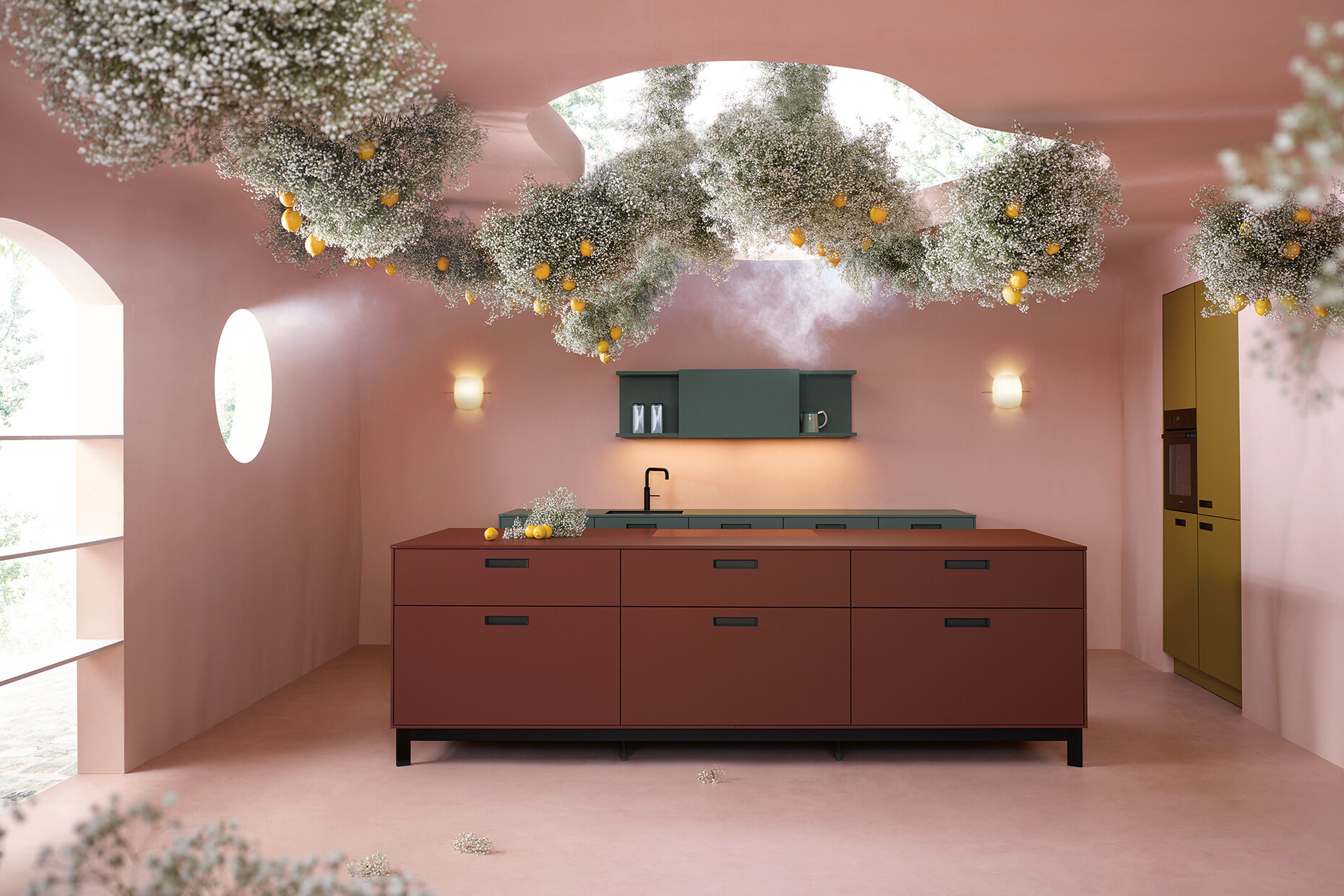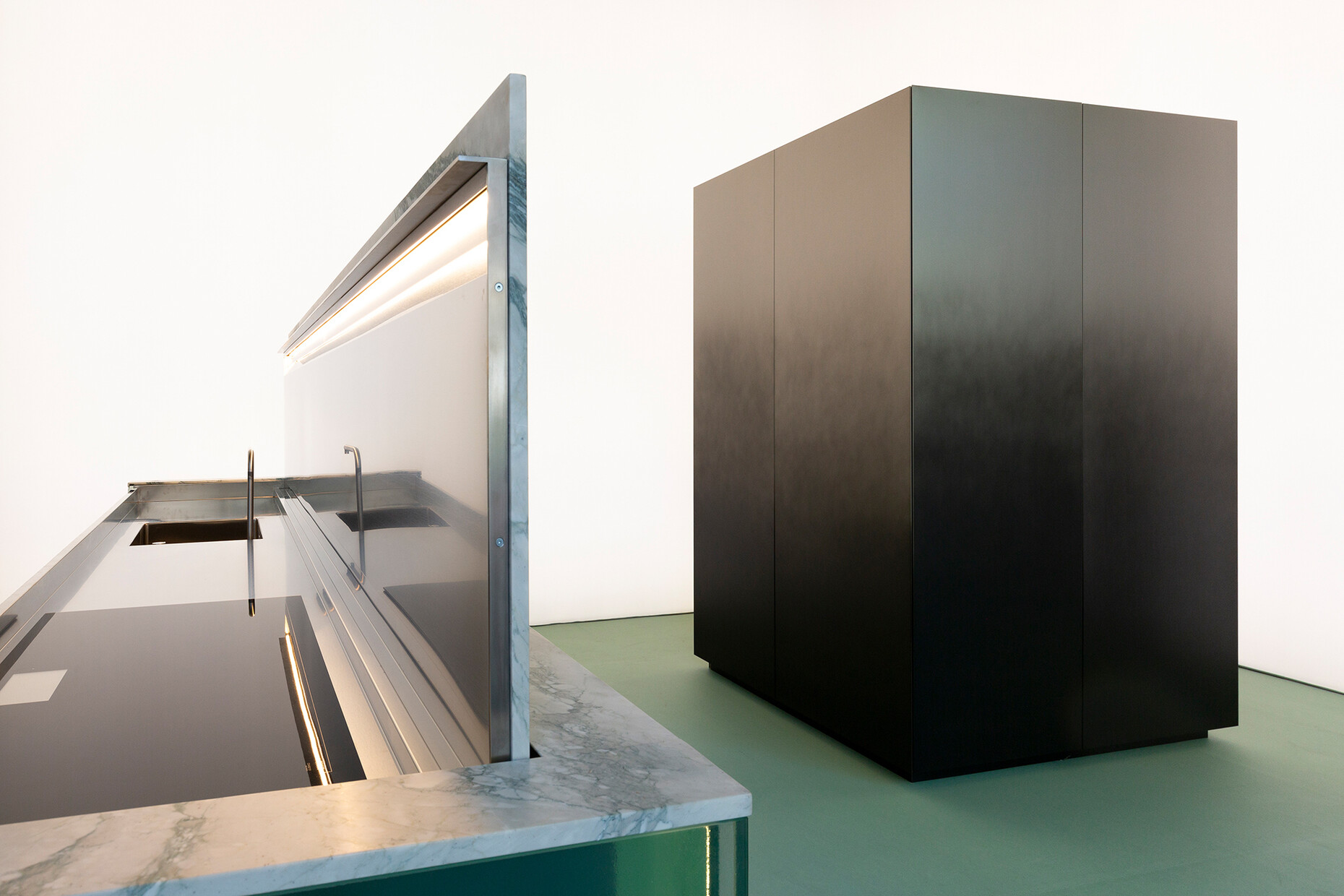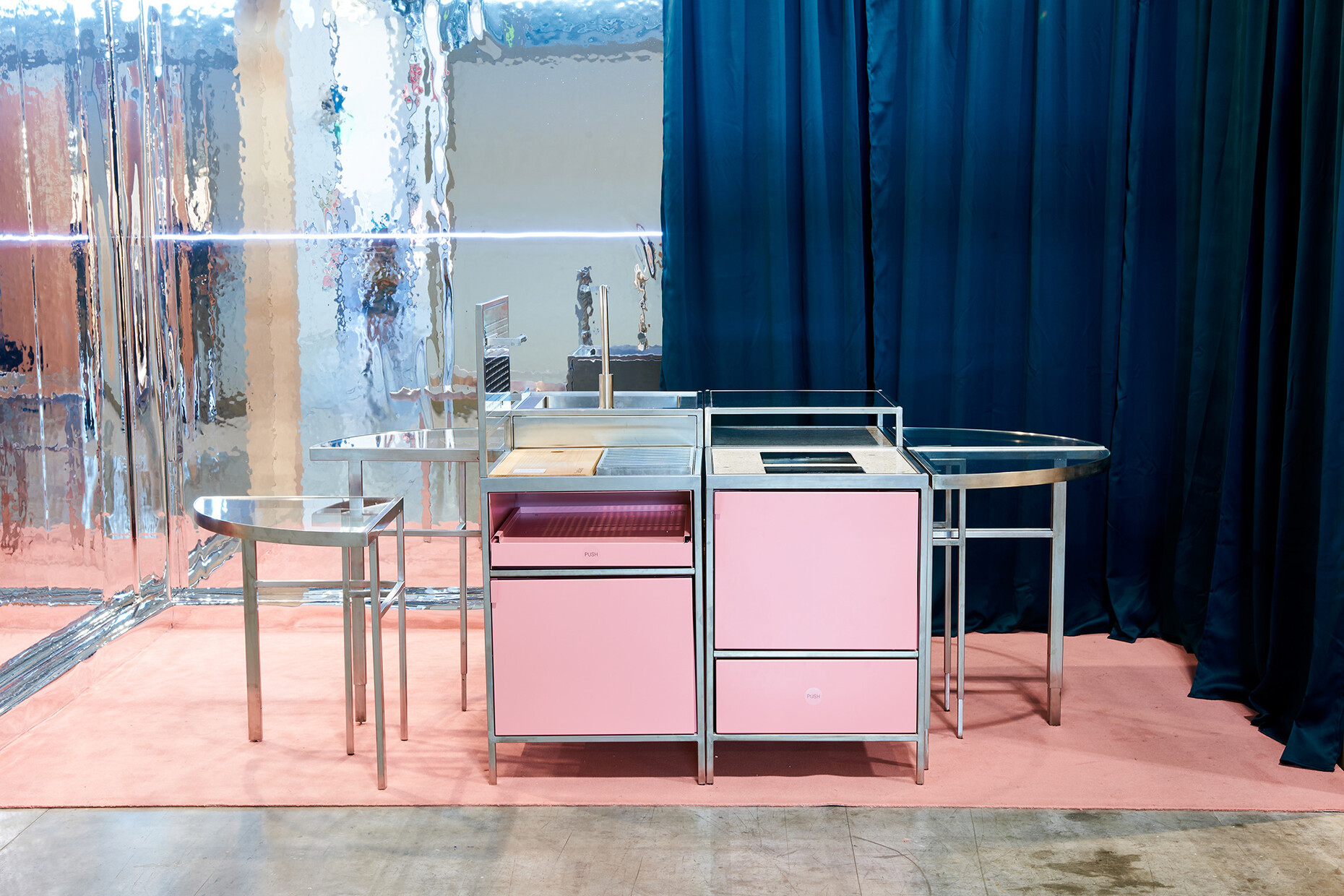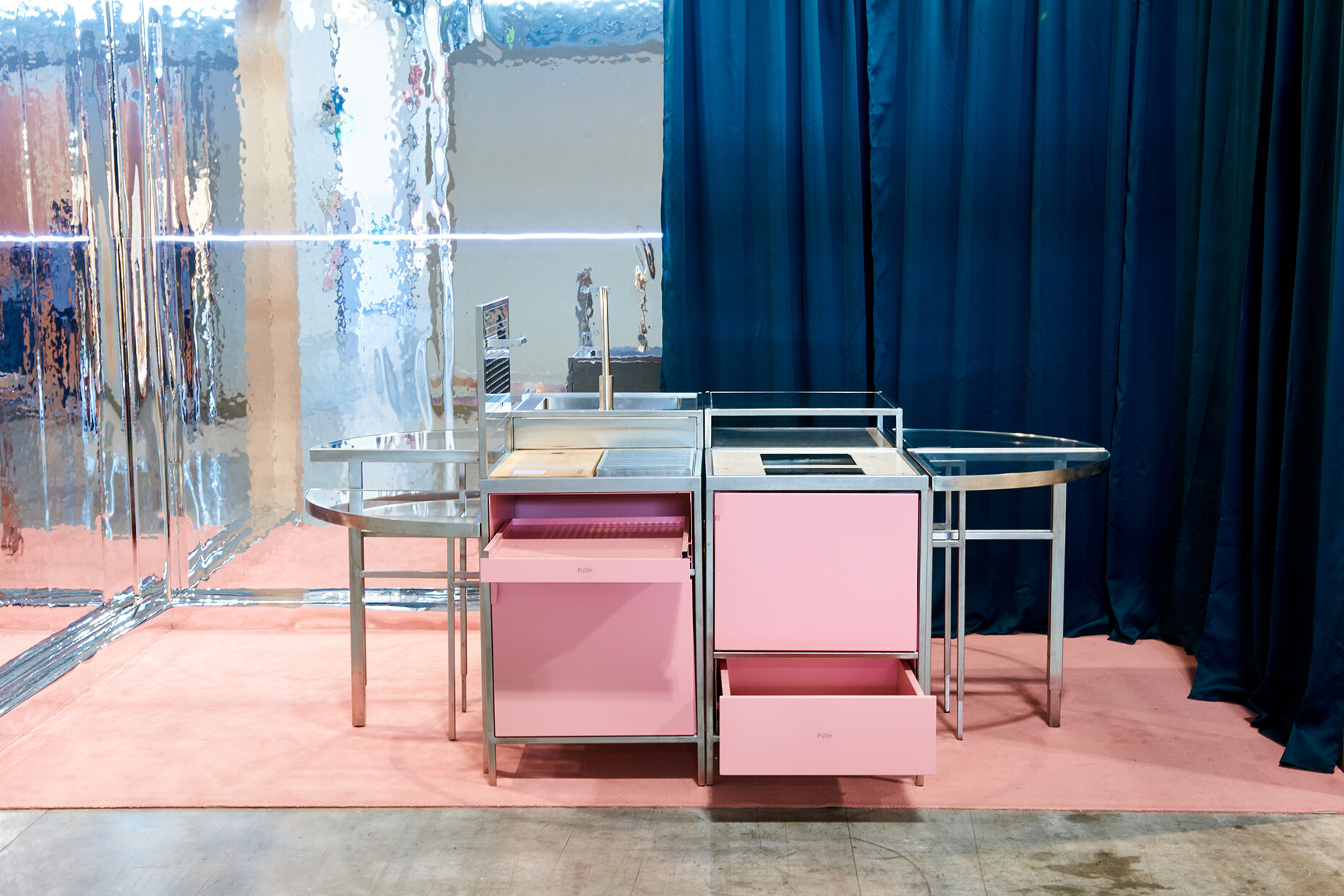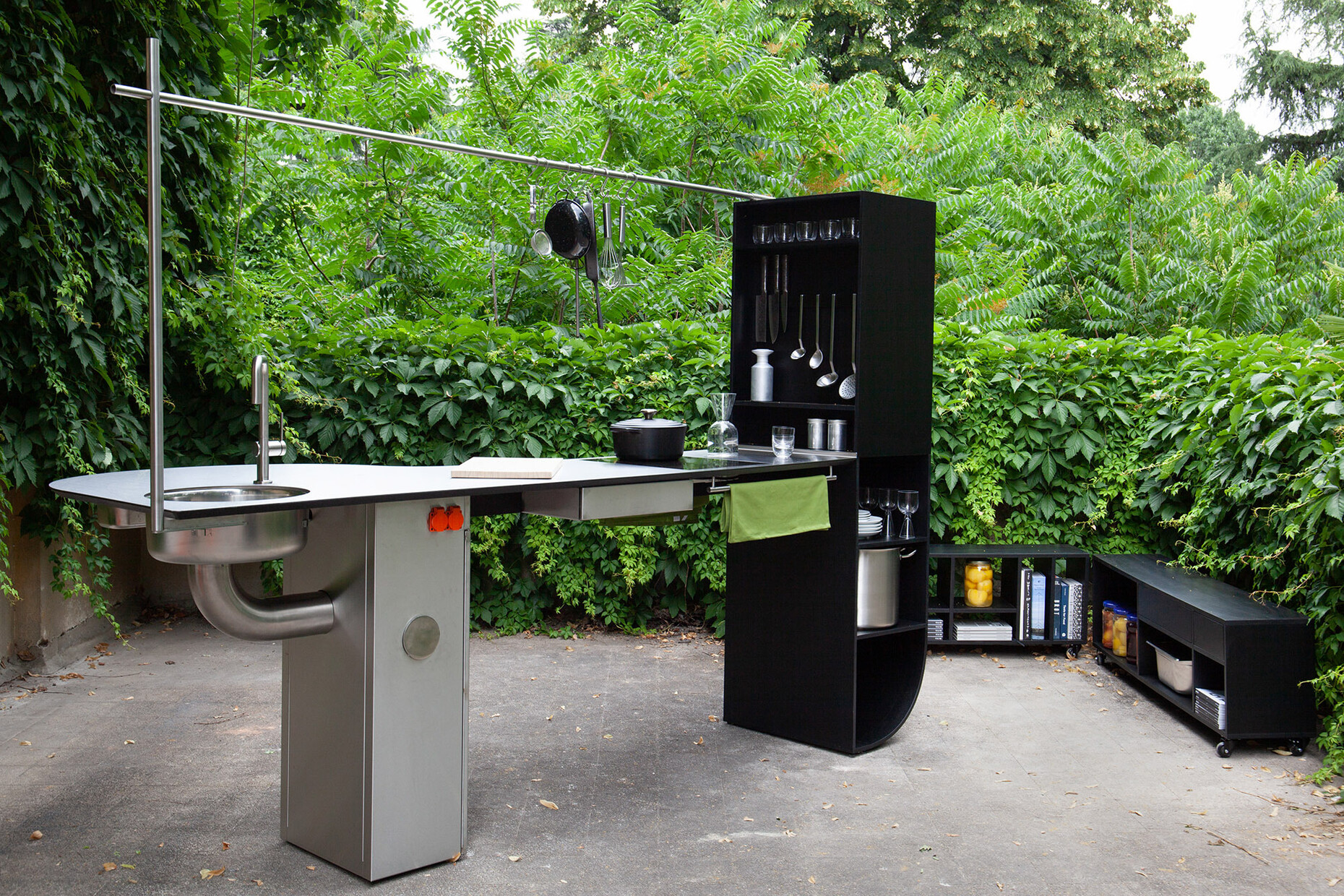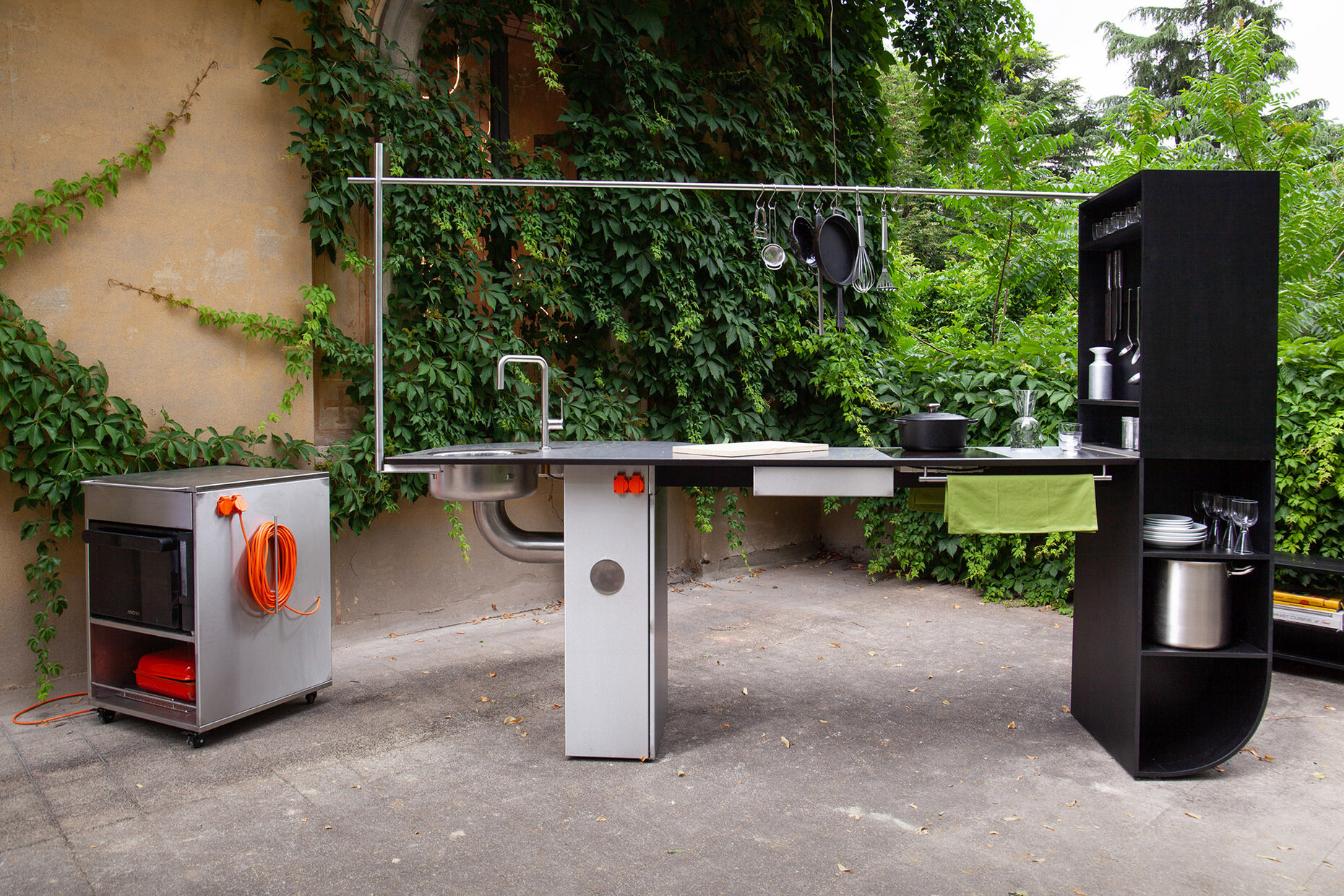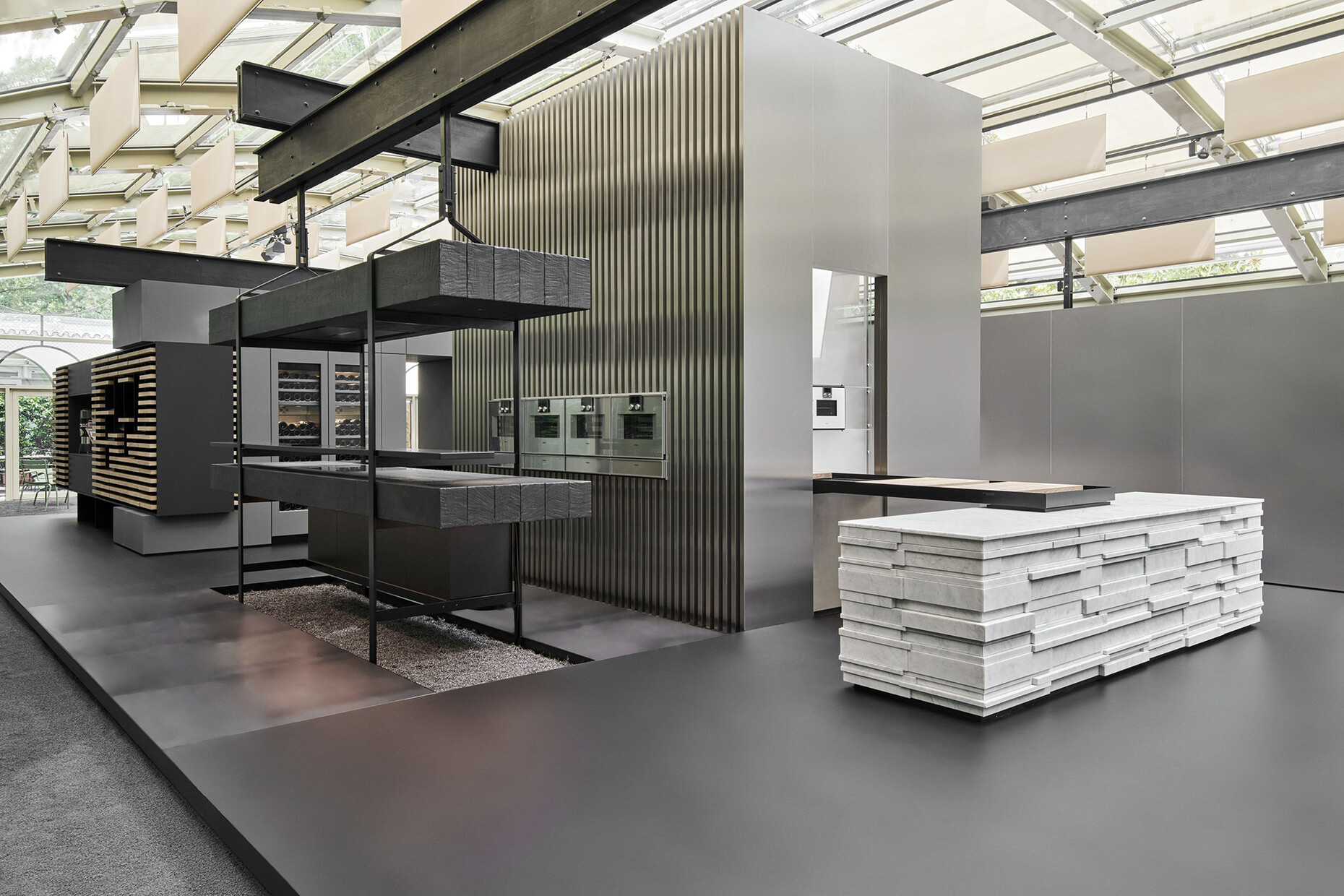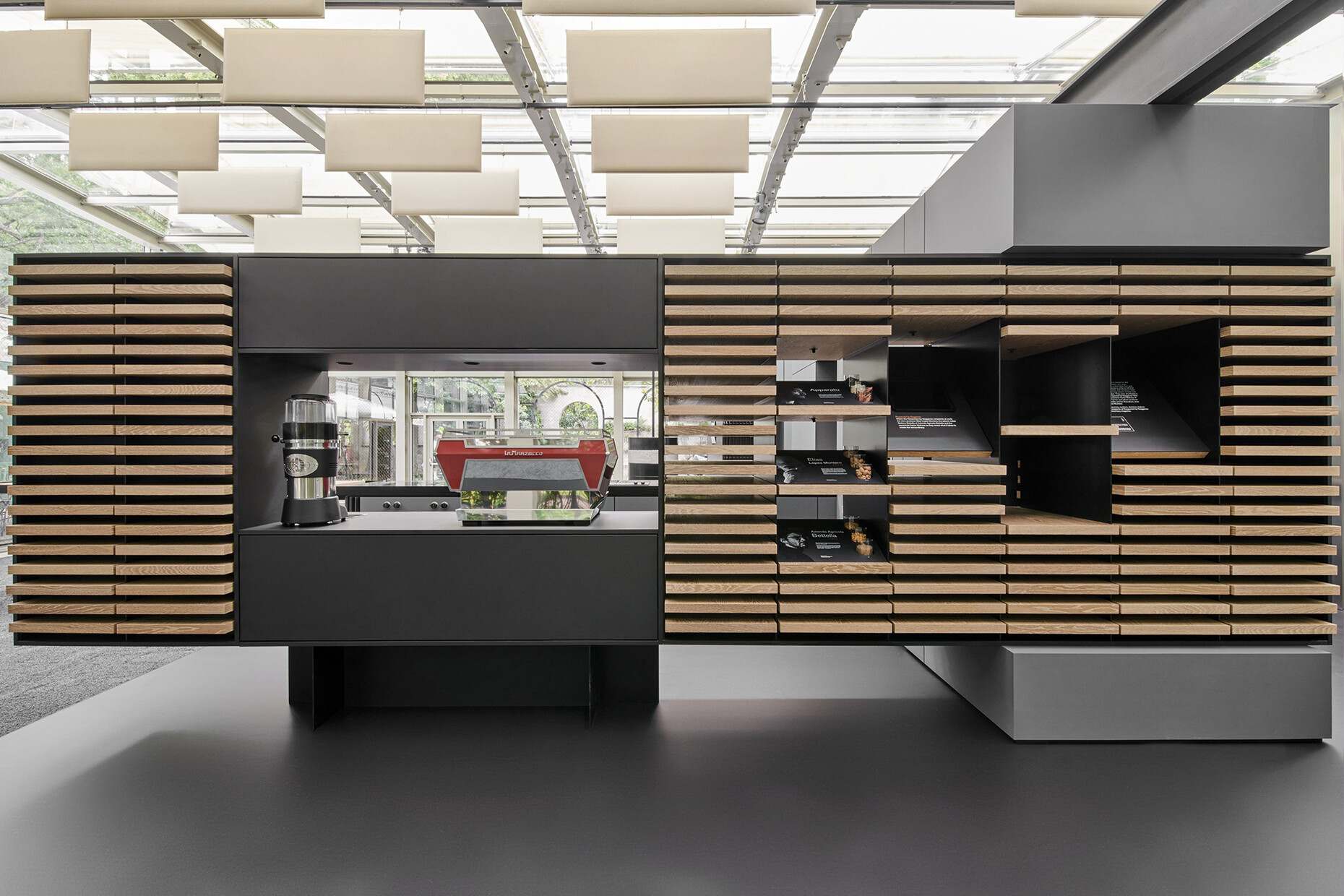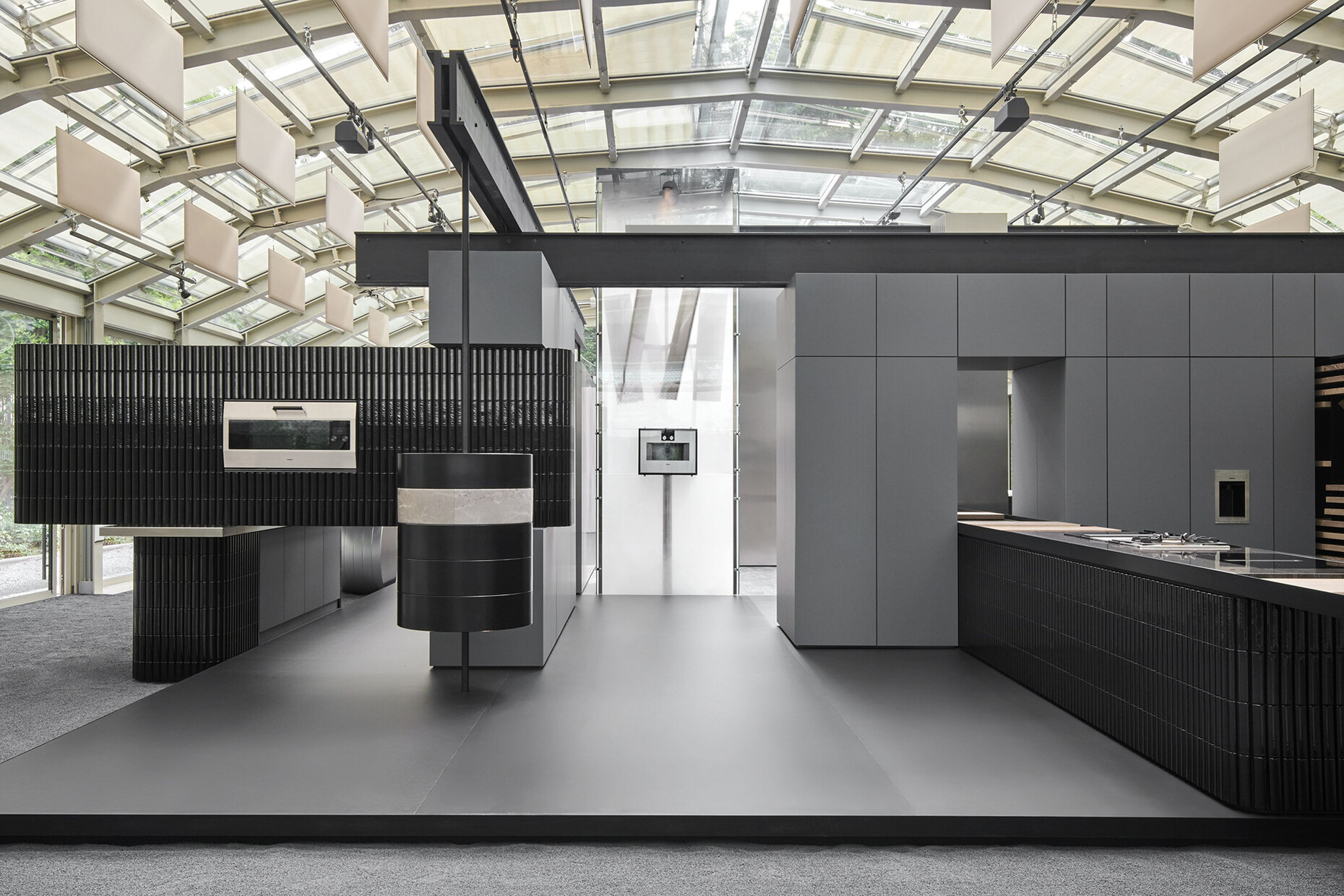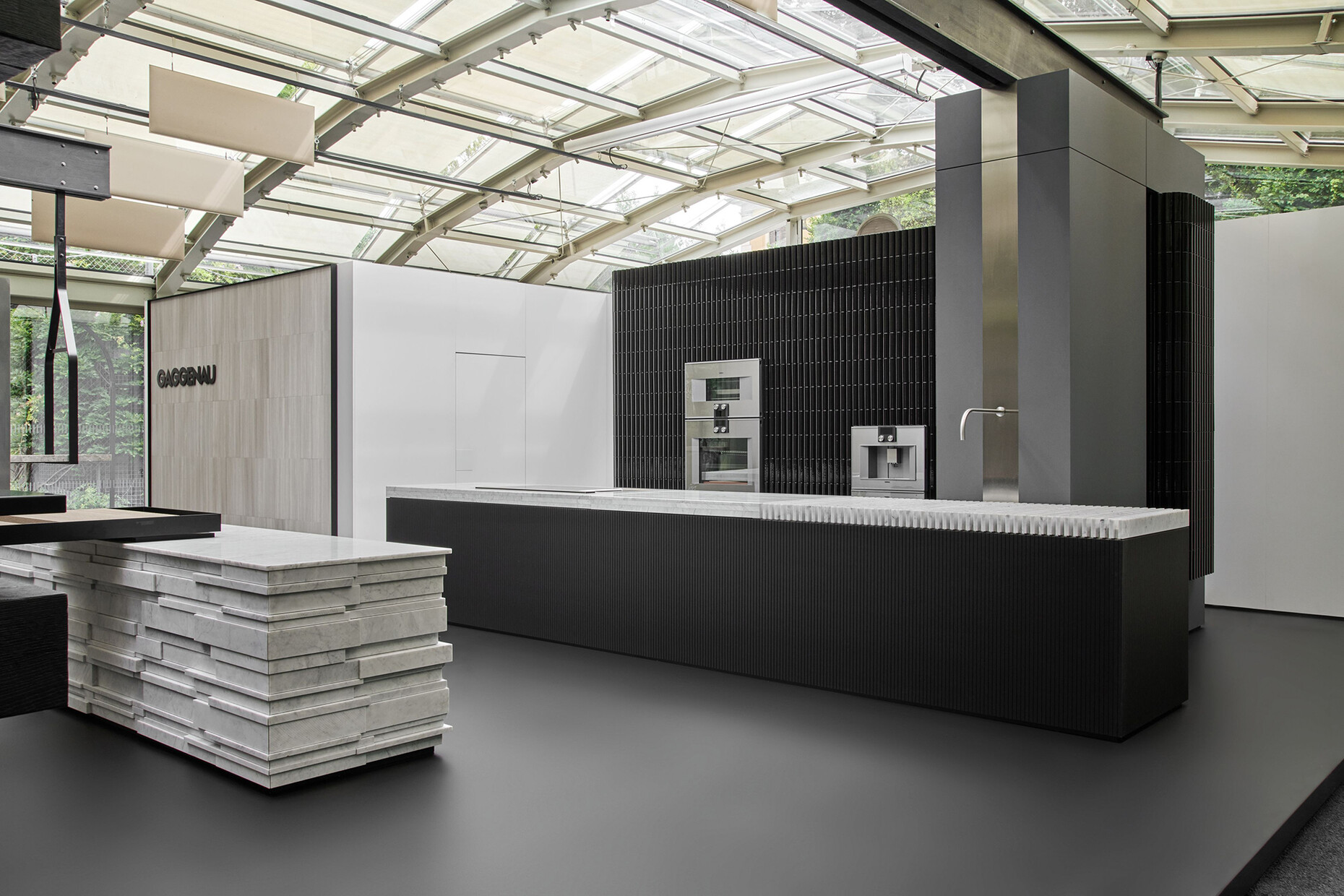Salone del Mobile 2022 – Review EuroCucina
The essence of the kitchen
After a break of four years it is back, the EuroCucina, which alternates every two years with the Euroluce at the Salone del Mobile. A lot has happened in the meantime, and so people were eager to see what the 23rd edition of the International Kitchen Furniture Exhibition had to offer. The area with 16,000 square meters and 82 exhibitors was correspondingly well attended and finally one could not only view the manufacturers' product innovations on the screen, but also experience them haptically and in personal exchange.
What had happened in the meantime not only in terms of design but also functionally was demonstrated, among other things, by the "BORA X Bo steam oven" from Bora, with which the cooktop and extractor specialist now also offers a combination of steam stove and oven, supplemented by an extractor hood. This ensures a clear view inside the appliance, while control is via a large 19-inch touch display. Cooking is thus supposed to function like a smartphone, with preset programs and intuitive user guidance contributing to this.
The "Combisteamer V6000 Powersteam" from V-ZUG, which also offers a touch display, is similarly user-oriented. Combining a full-fledged combisteamer with microwave use, the appliance's multifunctional approach offers a wide variety of preparation methods and the promise of making cooking accessible to everyone. In this regard, the booth, designed by Italian architect and designer Elisa Ossino, reflected the coming together of technology and nature with an installation by artist Stefano Roveda and sound designer Stefano Messina: "V-ZUG's technology is built on steam and water. If you think about it, that's the basis of the universe, of life," Ossino said of the concept.
Just how professional cooking can be at home was demonstrated by the "Hizone" blast freezers, chest freezers, refrigerators and refrigerated shelves designed by Antonio Citterio for the Italian manufacturer ISA, as well as the "Minimatic" blast chiller. For this, Citterio combined modern technology with the aesthetics of a furniture collection. This can be seen, among other things, in the glass windows with their fine wise lines, which provide a view into the interior. In this way, the individual appliances cut a fine figure both in the professional sector and in the home kitchen. They are also operated via a touch display.
Professional and private also came together at Alpes Inox, but with the signs reversed: The stainless steel kitchens bring an industrial look into the home, such as the "Liberi in cucina" collection, a system of independent elements that allows the kitchen to be freely played with. For this purpose, different functions such as sink, cooking, work area, refrigeration or storage can be combined in a modular way. This allows configuration in blocks, but also a free-standing arrangement of the individual modules. The kitchen thus becomes a spatial playing field that can be moved, changed, reconfigured and supplemented.
The fact that not only areas such as living and cooking, but also outdoor and indoor spaces are increasingly overlapping is demonstrated by the various outdoor kitchens at EuroCucina. One example is the collection from Barazza, whose centerpiece is the freestanding "Thalas" cooktops – a name derived from Greek mythology. In addition, there are multi-purpose covers for the hobs, which not only serve as protection, but can also be used as shelves or for transporting food. The minimalist designed sinks and square basins of the collection come in different sizes and installation options. They are all made of weather-resistant stainless steel AISI 316, which additionally protects against corrosion caused by salty sea air.
The "Small Living Kitchens" collection from Falper, which is now extending its portfolio of high-quality bathroom furnishings to kitchens, was presented in a very compact form. These are made up of islands, cabinets and tall units and are designed to provide the comfort and functionality of large kitchens in a much smaller space. The modular elements can be freely combined and positioned in the room. Here, too, the living room furnishings serve as a model, which can be seen, among other things, in the materiality, such as the elaborate wood-grain veneer of the surfaces or the drawers made of solid walnut.
Beyond Space also dealt with the optimization of space when designing "The Cookery" – for example, in the form of a slightly higher worktop that creates additional space. Designed as a small and compact island measuring 2.45 × 0.93 meters, "The Cookery" therefore offers as much storage space as a standard kitchen. In addition, there are details such as the positioning of the faucet, which allows the sink to be used from two sides. The kitchen cabinets are made of HPL, while the countertop is made of four-millimeter-thick stainless steel. In addition, there are eight color finishes and individual options in the choice of appliances.
The fact that not only spatial efficiency but also successful design are important was exemplified by next125 at EuroCucina – for example in the form of special colors and lacquered surfaces, which are combined here with a cubic design language, high-quality materials and precise workmanship. Added to this are minimalist handles, worktops in the same color and filigree aluminum bases in onyx black, which give the kitchens a floating appearance. To achieve this, next125 has extensively revised its color concept and now offers 18 new satin and velvet matt lacquer shades as well as three color categories that allow elegant color combinations.
Sculptural and reduced to the essentials, the "NU Hyper Kitchen" by Nero Cucine is composed of two freestanding elements, in which all the important functions of the kitchen are concentrated. The system consists of a vertical and a horizontal body, the former clad with stainless steel panels. The horizontal monolith, on the other hand, features an almost disembodied-looking surface made of tinted glass and a countertop made of Italian Cipollino Verde marble floating on top. This can be folded open, transforming the "NU Hyper Kitchen" into a kitchen unit. When closed, the elements look like exhibits that turn the kitchen into an art gallery.
There was also new impetus for the kitchen this year at the Salone Satellite, the newcomer platform of the Salone del Mobile – for example in the form of the "ilo+milo" system from Dedaleo, a series of playful modules that can be adapted to different rooms and needs. Here, seven freestanding elements can be combined to form a kitchen island that serves as the system's centerpiece. This also includes elements with a semi-circular worktop that can be combined to form a round table. The individual elements are thereby inserted into a visible tubular steel structure, which gives "ilo+milo" a filigree appearance.
The experimental design "NPK01", which chmara.rosinke presented on the platform Alcova in the former military hospital Centro Ospedaliero Militare di Baggio, addressed the essence of the kitchen. In doing so, the designers asked themselves how today's kitchens can be designed in terms of function, ergonomics, technology and aesthetics. With a graphic and reduced-playful design language, "NPK01" is a kind of archetype composed of movable modules, addressing aspects such as energy efficiency, circular economy or the change in the way we cook.
A special kitchen highlight was Gaggenau's "A Statement of Form" installation in the glass pavilion of Villa Necchi Campiglio, which was created with marble specialist Salvatori and ceramics manufacturer Kaufmann. Embedded in live talks and live cooking by three-star chef Christian Jürgens, the installation was a popular meeting place at the Salone del Mobile. Guests were greeted there by a suspended and gently swinging marble shelf and a work surface supported by a cylinder as a symbol of balance. Added to this was a linearly arranged work surface that ran through the entire installation as a visual axis. In doing so, "A Statement of Form" mapped the transformation process of raw material into a finished product, putting on display what constitutes the essence of the kitchen – a question that was answered in many ways at this year's EuroCucina.


